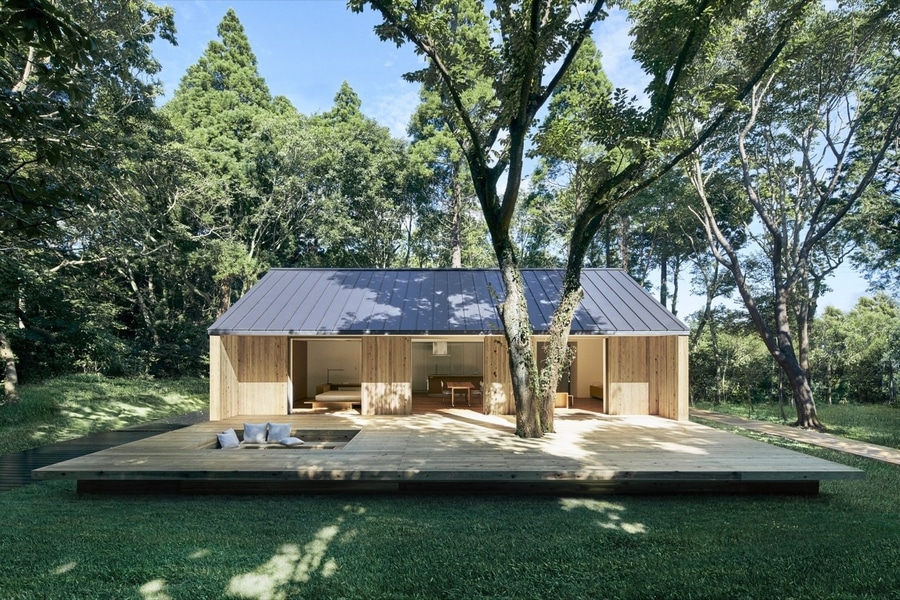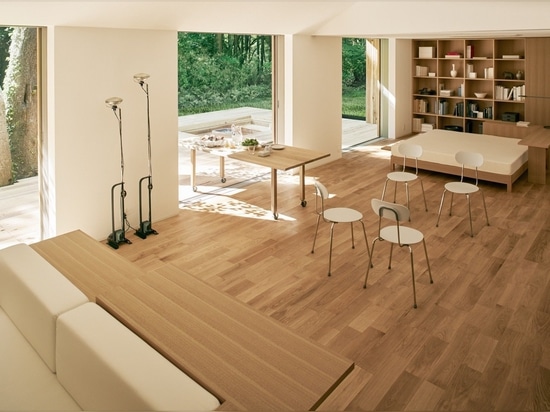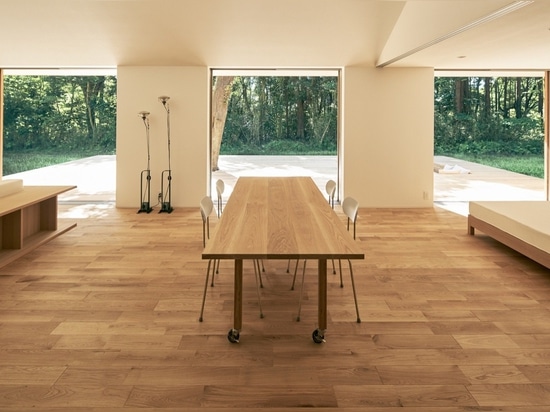
#RESIDENTIAL ARCHITECTURE PROJECTS
Muji Just Unveiled a New Prefab Home—and it’s a Minimalist Dream Come True
The Japanese “no-brand” masters of minimalism unveil the first single-story design in their line of prefab homes.
Japanese brand Muji just debuted the Yō no Ie House (Plain House)—the fourth offering in their line of prefabricated homes. Unlike its predecessors, the Yō no Ie House is the brand’s first single-story prefab, and it was launched in response to growing demand for low-profile homes with suburban and rural—rather than urban—applications. Created with Japan’s aging population in mind, the low-maintenance and stair-free Yō no Ie House is perfectly positioned as a home for retirees.
The introduction of the Yō no Ie House marks Muji’s 15th anniversary in the homebuilding industry—the company’s first home was the Ki no Ie (Wood House), which was designed by Kazuhiko Nanba and launched in 2004. It was followed by the Kengo Kuma–designed Mado no le (Window House) in 2008, and the triple-story Tate no le (Vertical House) in 2010.
In 2015, Muji also experimented with Japanese-style micro homes—designed by Jasper Morrison, Konstantin Grcic, and Naoto Fukasawa—and the company later launched sales of the prefab Muji Hut in 2017.
In keeping with the brand’s minimalist aesthetic, all Muji Houses are designed with open layouts to give homeowners the freedom to configure the space to their liking.
The durable, energy-efficient home draws upon traditional Japanese architecture, and it incorporates passive solar principles and high-quality materials. The open-plan layout and strategically placed windows create a sense of expansiveness in the deliberately compact building.
The Yō no Ie House also emphasizes indoor/outdoor living—the large, 200-square-foot wooden deck is designed to feel like a natural extension of the 800-square-foot interior.
Pricing for the base model of the Yō no Ie House starts at $160,000, and the home is only available for purchase in Japan. Muji currently sells around 300 prefab buildings a year—a number that is expected to increase with its newest model.




